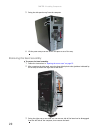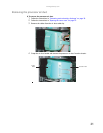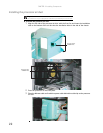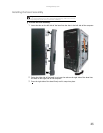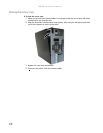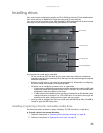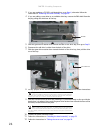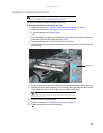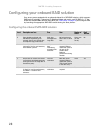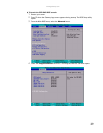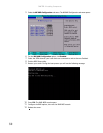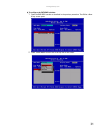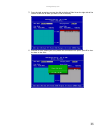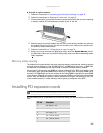
CHAPTER 4: Installing Components
28
Configuring your onboard RAID solution
Your server comes equipped with an onboard chipset for a SATA RAID solution, which supports
RAID levels 0 (striping), 1 (mirroring), 5 (distributed data and parity), and 10 (RAID 0 + 1). You
enable the onboard RAID solution in the BIOS (See “RAID Setup” on page 76) and configure RAID
by launching the appropriate RAID BIOS console during the boot process.
Configuring the onboard SATA RAID solution
Level Description and use Pros Cons Number of
drives
Fault
Tolerant
0 Data divided into blocks and
distributed sequentially (pure
striping). Use for non-critical data
that requires high performance.
High data
throughput for
large files.
No fault tolerance.
Data is lost if a drive
fails.
One or two
(on this
server)
No
1 Data duplicated on another disk
(mirroring). Use for read-intensive,
fault-tolerant systems.
100 percent
data
redundancy,
providing fault
tolerance.
More disk space
required. Reduces
usable disk space to
the size of the
smallest drive.
Reduced
performance during
rebuilds.
Two Yes
5 Stripes data at a block level across
several drives and distributes parity
among the drives. No single disk is
devoted to parity.
Fast and
redundant
More disk space
required. Reduces
usable disk space to
75% of total storage
in the disk array.
Three Yes
10 A combination of RAID 1 and RAID
0. Raid 0 is used for performance,
and RAID 1 is used for fault
tolerance.
Fast and
redundant
An additional drive
required.
Four Yes



